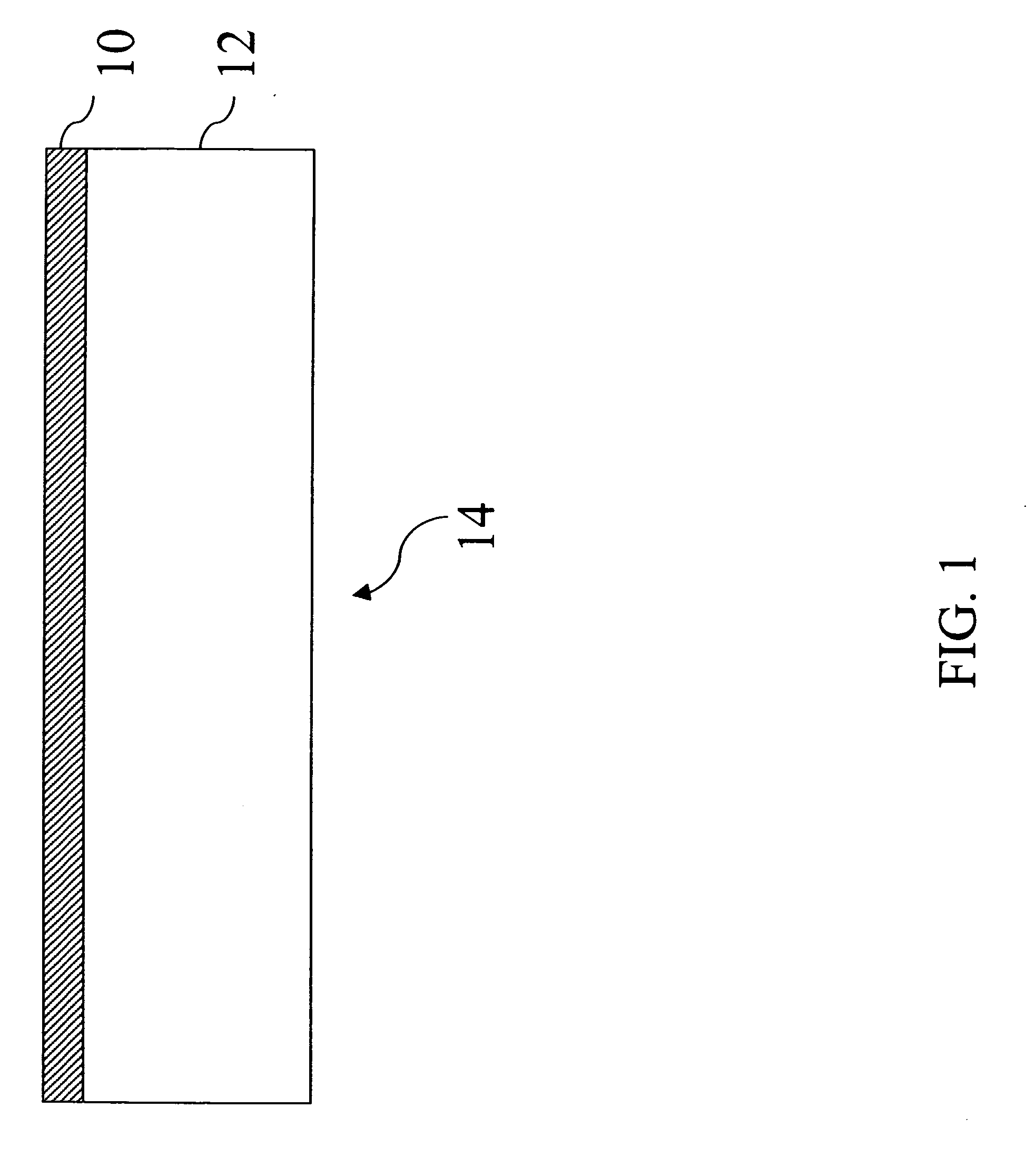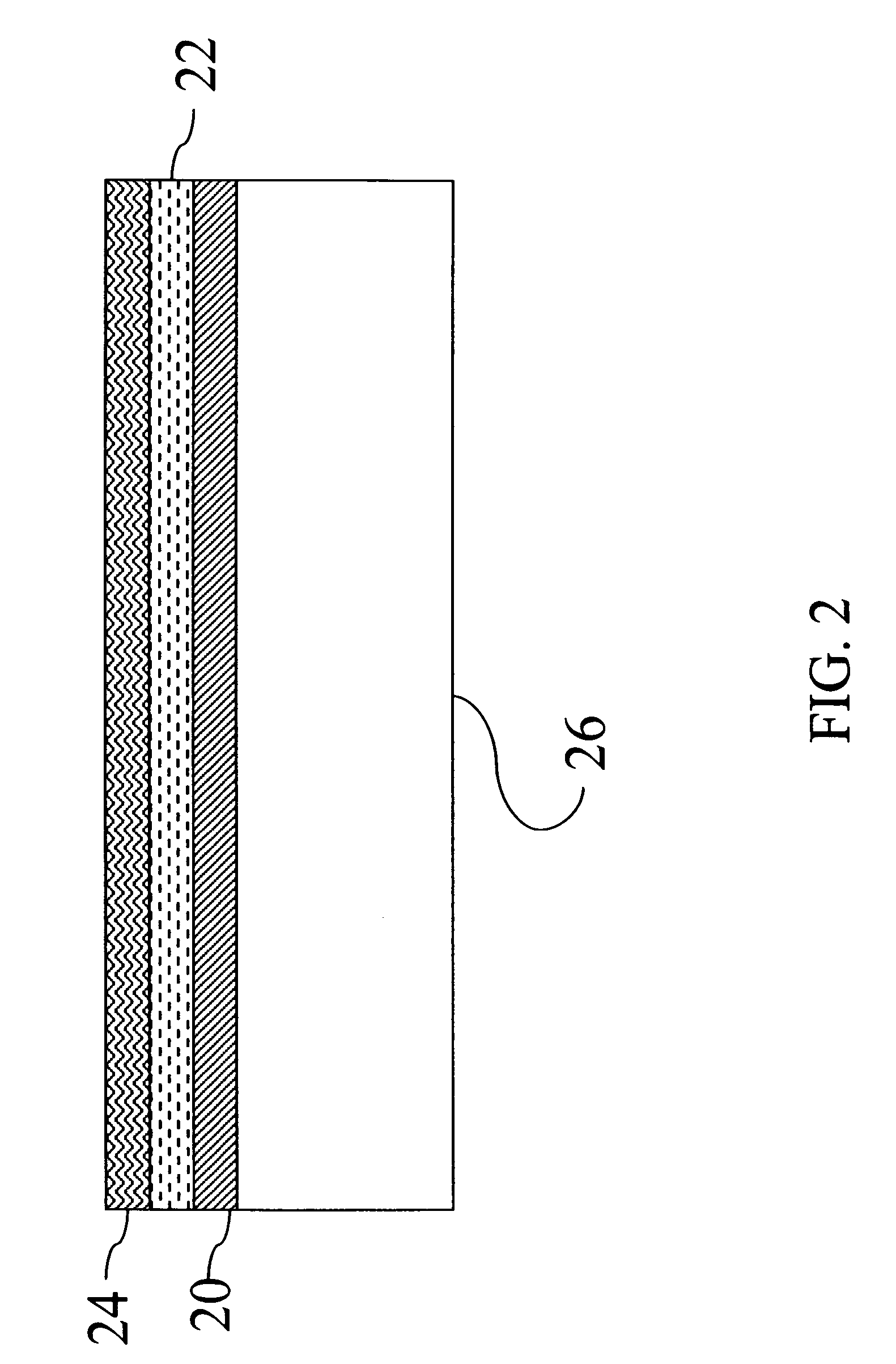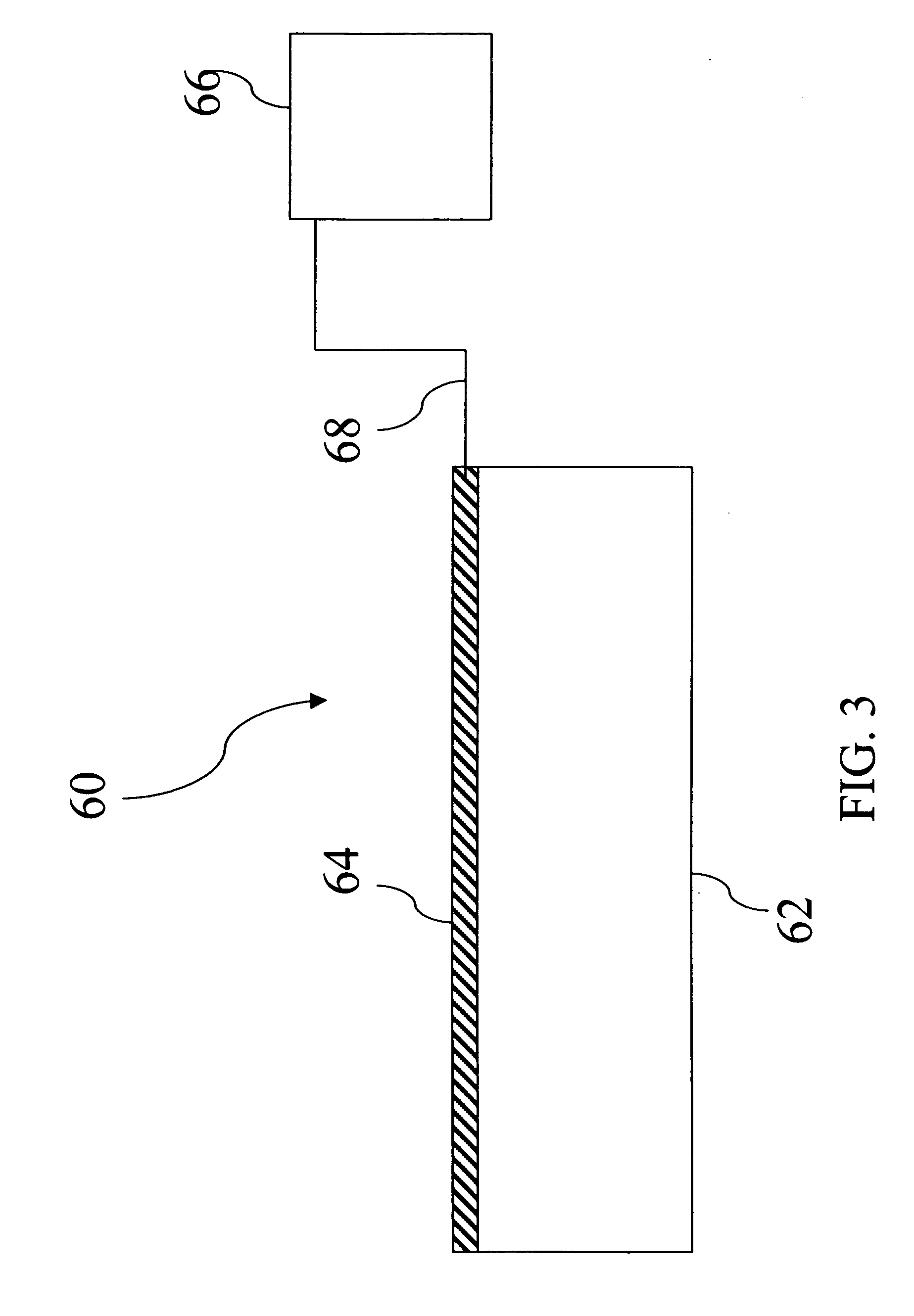Polymeric conductor donor and transfer method
- Summary
- Abstract
- Description
- Claims
- Application Information
AI Technical Summary
Benefits of technology
Problems solved by technology
Method used
Image
Examples
examples
[0154] Donor Laminates
[0155] The following ingredients were used to form the coating composition for forming the donor laminate examples:
Ingredients for Coating Composition
(a) Baytron P HC: aqueous dispersion of electronically conductive polythiophene and polyanion, namely, poly(3,4-ethylene dioxythiophene styrene sulfonate), supplied by H.C. Starck;
(b) Olin 10G: nonionic surfactant supplied by Olin Chemicals;
(c) N-methylpyrrolidone: conductivity enhancing agent supplied by Acros;
(d) diethylene glycol: conductivity enhancing agent supplied by Aldrich;
(e) Silquest A 187: 3-glycidoxy-propyltrimethyoxysilane supplied by Crompton Corporation and
(f) isopropanol;
[0156] The following coating composition A was prepared for coating suitable substrates to form the laminate examples:
Coating composition ABaytron P HC (1.3% aqueous)88.71gOlin 10G (10% aqueous)0.5gN-methylpyrrolidone5.16gDiethylene glycol4gSilquest A 1871.8gIsopropanol4.33g
The laminate substrates used were tria...
PUM
| Property | Measurement | Unit |
|---|---|---|
| Temperature | aaaaa | aaaaa |
| Fraction | aaaaa | aaaaa |
| Linear density | aaaaa | aaaaa |
Abstract
Description
Claims
Application Information
 Login to View More
Login to View More - R&D
- Intellectual Property
- Life Sciences
- Materials
- Tech Scout
- Unparalleled Data Quality
- Higher Quality Content
- 60% Fewer Hallucinations
Browse by: Latest US Patents, China's latest patents, Technical Efficacy Thesaurus, Application Domain, Technology Topic, Popular Technical Reports.
© 2025 PatSnap. All rights reserved.Legal|Privacy policy|Modern Slavery Act Transparency Statement|Sitemap|About US| Contact US: help@patsnap.com



